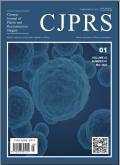Plasma radiofrequency-assisted microsuction for the treatment of facial overfilled syndrome induced by diverse causes in Asians
Chinese Journal of Plastic and Reconstructive Surgery
Pub Date : 2024-12-01
DOI:10.1016/j.cjprs.2024.11.003
引用次数: 0
Abstract
Background
In Asia, facial overfilled syndrome (FOS) can arise from iatrogenic causes involving the excessive use of filling materials, as well as physiological causes such as adipose tissue hypertrophy type, age-related type, and lacuna type. This study aimed to demonstrate the safety and effectiveness of plasma radiofrequency-assisted microsuction (PRFAMS) for improving the appearance of FOS induced by various causes.
Methods
PRFAMS was performed on 84 anatomical regions of 37 female patients (including 12 with physiological causes, 6 with hyaluronic acid causes, and 19 with fat causes), aged between 20 and 50 years (mean, 35.9 years), who had FOS. Demographic and surgical data were collected retrospectively. Preoperative and postoperative photographs were taken, and satisfaction interviews were conducted at least six months after surgery.
Results
All the patients underwent successful surgery under local or intravenous anesthesia. Only four anatomic regions showed noticeable asymmetry postoperatively, requiring a secondary operation. Postoperative skin numbness, muscle paralysis, bruising, and minor contouring irregularities improved significantly within 2–3 weeks of recovery. Additionally, five patients with longer edema periods demonstrated substantial improvement after more than five weeks. No cases of skin necrosis, thermal injury, or other serious complications related to the device or procedure were reported. Ultimately, all patients expressed satisfaction with their outcomes.
Conclusion
The PRFAMS technique is a safe and effective method for treating FOS induced by various causes, while minimizing complications and ensuring high patient satisfaction.
等离子体射频辅助微吸治疗亚洲人多种原因引起的面部充盈综合征
在亚洲,面部过度填充综合征(FOS)可由医源性原因引起,包括过度使用填充材料,也可由生理原因引起,如脂肪组织肥厚型、年龄相关型和腔隙型。本研究旨在证明等离子体射频辅助微吸(PRFAMS)改善各种原因引起的FOS外观的安全性和有效性。方法对年龄在20 ~ 50岁(平均35.9岁)的FOS女性患者37例(生理原因12例,透明质酸原因6例,脂肪原因19例)进行84个解剖区sprfams检查。回顾性收集人口统计学和手术资料。术前和术后拍照,并在术后至少6个月进行满意度访谈。结果所有患者均在局麻或静脉麻醉下手术成功。只有四个解剖区域术后出现明显的不对称,需要二次手术。术后皮肤麻木、肌肉麻痹、瘀伤和轻微轮廓不规则在恢复后2-3周内显著改善。此外,5名水肿期较长的患者在超过5周后表现出明显改善。没有皮肤坏死、热损伤或其他与设备或手术相关的严重并发症的病例报告。最终,所有患者都对治疗结果表示满意。结论PRFAMS技术是一种安全有效的治疗各种原因引起的FOS的方法,可减少并发症,提高患者满意度。
本文章由计算机程序翻译,如有差异,请以英文原文为准。
求助全文
约1分钟内获得全文
求助全文
来源期刊

Chinese Journal of Plastic and Reconstructive Surgery
Surgery, Otorhinolaryngology and Facial Plastic Surgery, Pathology and Medical Technology, Transplantation
CiteScore
0.40
自引率
0.00%
发文量
115
审稿时长
55 days
 求助内容:
求助内容: 应助结果提醒方式:
应助结果提醒方式:


